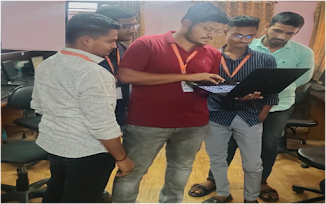Each
One Teach One
The "each one,
teach one" principle can be particularly impactful in the field of civil
engineering. Here are some of the ways in which this approach can benefit civil
engineers:
Improved
knowledge sharing: Civil engineering is a complex field,
and there is a lot to learn. By sharing knowledge and skills with each other,
civil engineers can deepen their understanding of key concepts and learn from
each other's experiences. This can lead to better decision-making, improved
project outcomes, and more innovative solutions.
Increased
collaboration: Civil engineering projects often
involve teams of professionals working together to achieve a common goal. By
practicing "each one, teach one," team members can learn from each
other, share their expertise, and work more effectively as a team.
Mentorship
opportunities: Experienced civil engineers can play a
valuable role as mentors, sharing their knowledge and experience with younger
or less experienced professionals. This can help to build a stronger, more
skilled workforce and promote career growth and development.
Innovation
and creativity: By encouraging each other to share
their knowledge and skills, civil engineers can spark new ideas and approaches
to problem-solving. This can lead to more innovative and creative solutions,
which can benefit the industry as a whole.
Community
impact: Civil engineering projects have a significant
impact on the communities in which they are located. By practicing "each
one, teach one," civil engineers can better understand the needs of these
communities and work more collaboratively with them to achieve positive
outcomes.
In summary, the
"each one, teach one" principle can have numerous benefits and
advantages for civil engineers. By sharing knowledge and skills with each
other, civil engineers can improve their understanding of key concepts, work
more effectively as a team, promote career growth and development, and achieve
positive outcomes for the communities they serve.


Very nice and informative blog
ReplyDeleteGood initiative.
ReplyDeleteGood platform to share the knowledge among the students. Because every student is a master in their interested field.
ReplyDeleteNice activity
ReplyDeleteNice activity
ReplyDeleteInformative activity
ReplyDeleteFuntastic
ReplyDeleteIt is useful for students to show their creativity
ReplyDeleteExcellent Activity.
ReplyDeleteIt increases knowledge as well as creativity among the students and also it really helpful to achieve their goals.
Helpful for Improving communication skills
ReplyDeleteExcellent Activity
ReplyDeleteNice Activity
ReplyDeleteVery nice activity
ReplyDeleteGood
ReplyDelete